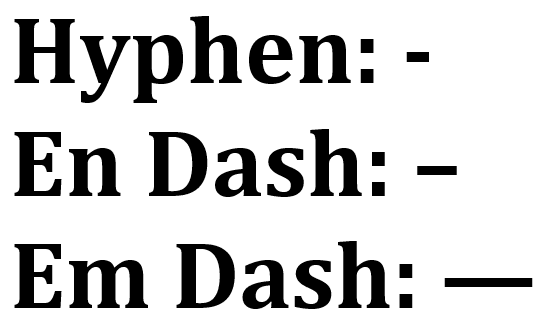-
2-minute read
-
30th May 2020
Punctuation Tips: What Is an Em Dash?
Do you know how to use an em dash in your written work? In this post, we will look at what em dashes is and what they are used for.
What Is an Em Dash?
An em dash (—) is a punctuation mark. It is longer than a hyphen (-) or an en dash (–). It also has several uses, which we will look at below.

Parenthetical Statements
The main use of em dashes is to set off extra information in a sentence. For instance, we could use em dashes in place of commas or parentheses:
One of the twins—she couldn’t tell them apart—ran to greet her.
As shown above, em dashes are often left unspaced when used in this way. However, some style guides, such as the Associated Press Stylebook, require a space before and after each dash:
One of the twins — she couldn’t tell them apart — ran to greet her.
In British English, many people prefer to use spaced en dashes for parenthetical statements like the one above. As such, if you have one, you should always check what your style guide says about the use of dashes.
Find this useful?
Subscribe to our newsletter and get writing tips from our editors straight to your inbox.
Subscribe to Beyond the Margins and get your monthly fix of editorial strategy, workflow tips, and real-world examples from content leaders.
In Place of a Colon
We can also use an em dash in place of a colon to introduce something at the end of a sentence. For example:
It soon became apparent that he was only in this for one thing—the money.
Some people consider using an em dash less formal than using a colon.
Interruptions in Dialogue
In fictional dialogue, an em dash can also be used to show that speech has been interrupted or stopped abruptly:
“Don’t touch that,” Frankie said, “or it’ll fall off the—” But he was too late, and all he could do was watch as the vase crashed to the floor.
Proofreading for Punctuation
Using the right punctuation in your writing is important, as it helps your reader to understand what you are trying to say. If you’d like someone to check your work, we have proofreaders available 24/7.




